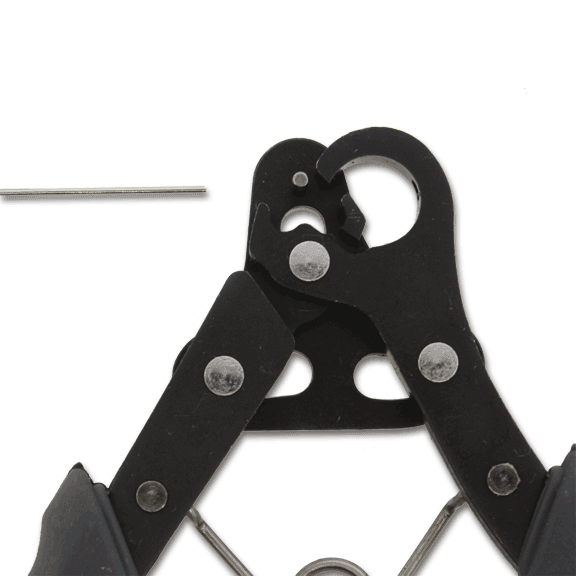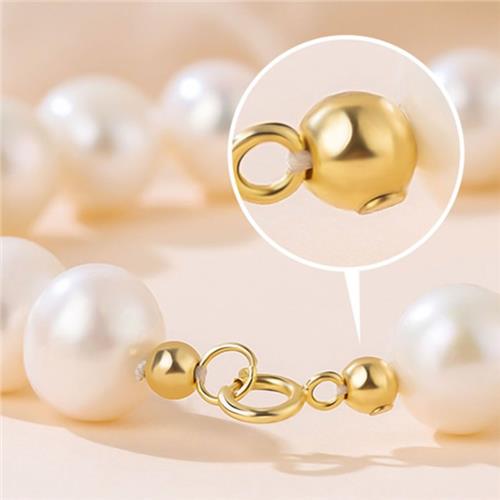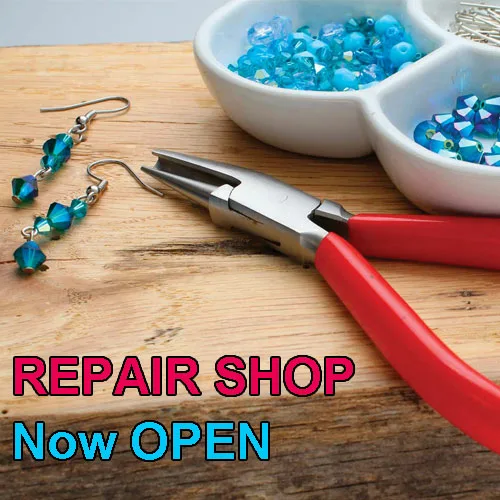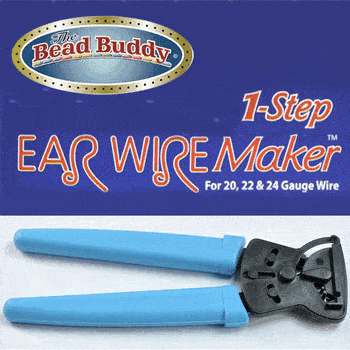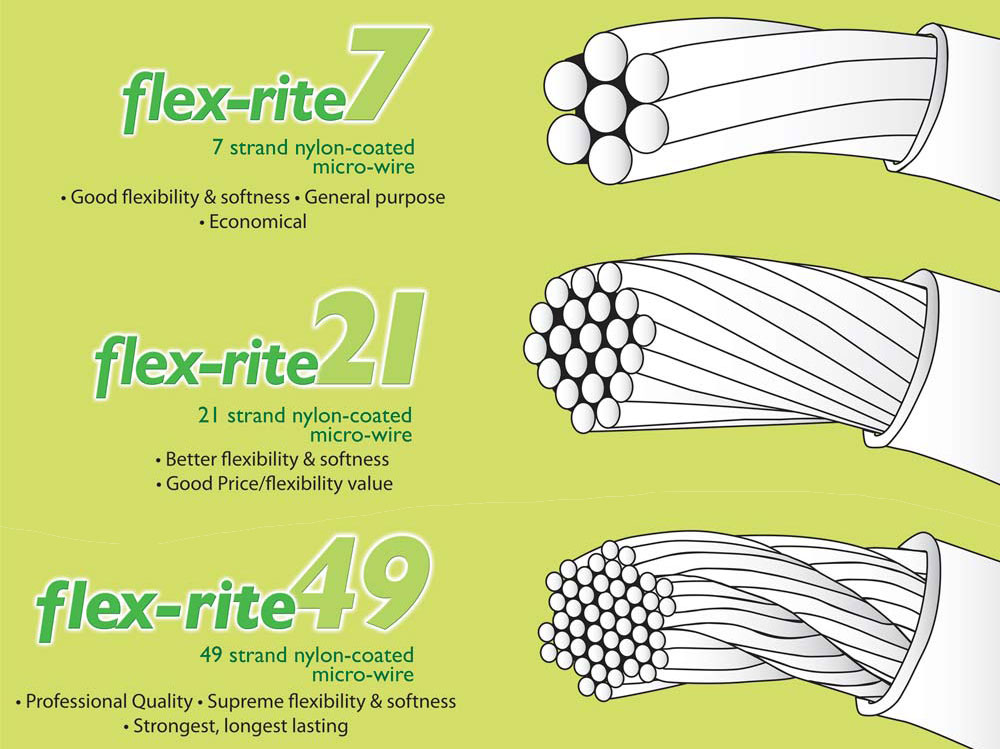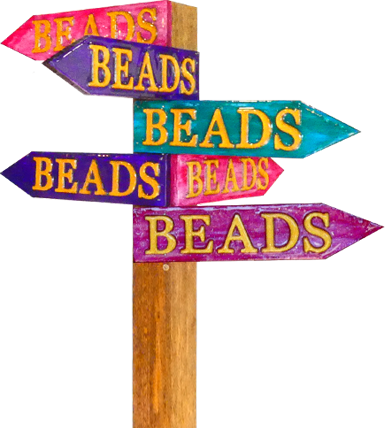Jump Rings & Split Rings

Jump rings and split rings are commonly used in jewellery making. Jump rings are open circular rings that can be easily opened and closed using pliers. They are ideal for connecting various components in jewellery designs, such as attaching charms, pendants, or clasps to chains or other findings.
Split rings, on the other hand, resemble miniature key rings with a small cut in the circumference. They provide a more secure connection than jump rings and are commonly used for attaching keys, charms, or other items that require a higher level of strength and durability. Split rings are slightly more challenging to open and close compared to jump rings but offer added security against accidental opening.
-
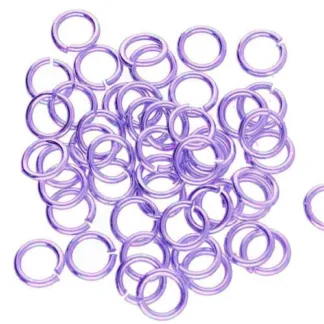
Aluminium (14)
-
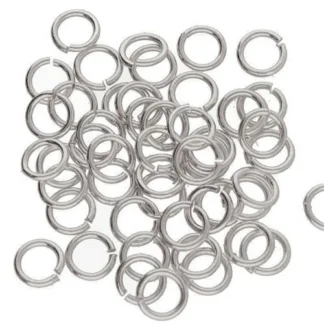
Antique Silver (25)
-
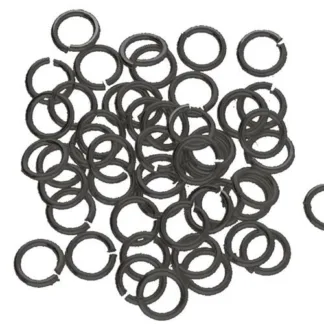
Black (7)
-
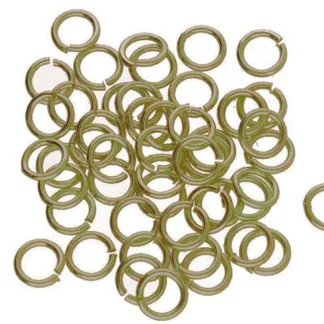
Bronze (14)
-
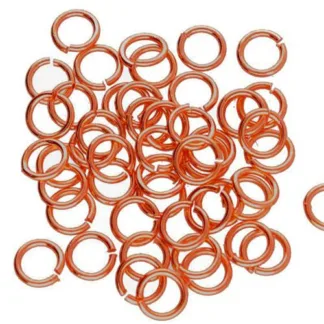
Copper (12)
-
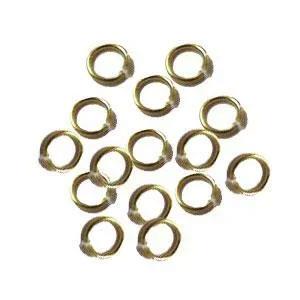
Gold & Vermeil (7)
-
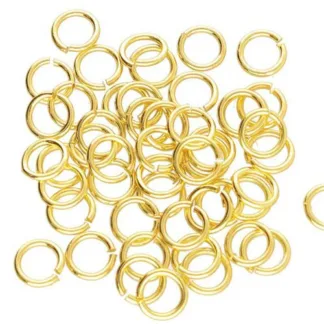
Gold Plated (37)
-
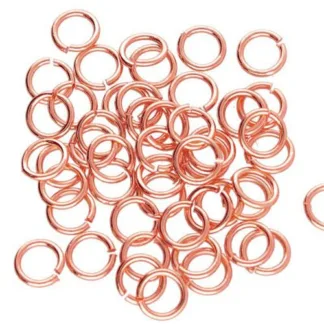
Rose Gold (11)
-
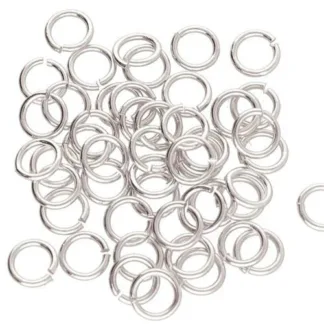
Silver Plated (28)
-
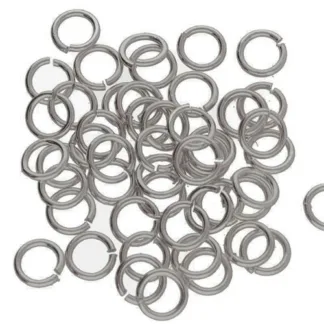
Stainless Steel (13)
-
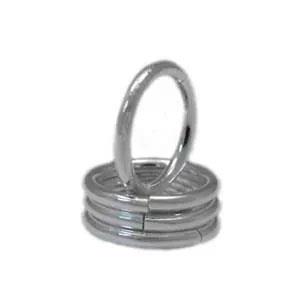
Sterling Silver (15)
-
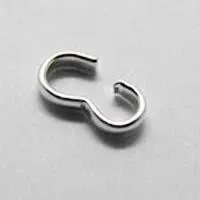
W Connectors (4)
Looking for Key Chain Split Rings?
If you’re looking for the split rings to make your own key chains, Beads N Crystals is an excellent choice! As a reputable supplier of jewelry-making materials and accessories, we offer a wide variety of high-quality split rings in various sizes and finishes. Head over to our Findings->Key Rings / Key Chains category to see them all.
Looking for Gold and Sterling Silver Jump Rings?
Beads N Crystals is the perfect destination for sourcing high-quality Sterling Silver, Vermeil, and Gold Filled jump rings for your jewellery-making projects. With our comprehensive selection of precious metal findings, you’ll find the perfect components to complement your designs.
What’s the difference between Jump Rings and Split Rings?
Jump rings and split rings are both types of metal rings used in jewellery making and crafting, but they serve different purposes and have distinct characteristics:
Jump Rings:
- Function: Jump rings are used to connect different components in jewellery making, such as attaching charms, pendants, or chainmail and chain links to create a complete piece.
- Shape: Jump rings are typically circular in shape and have an opening that allows you to thread them onto other elements before closing them securely with pliers.
- Opening: Jump rings have a single opening, which makes them easy to attach to other components but also means they may be less secure if not properly closed.
- Usage: Jump rings are widely used in various jewellery-making techniques like chainmail, chain jewellery, beading, and attaching clasps and findings.
Split Rings:
- Function: Split rings are specifically designed for added security when attaching items to keychains, zipper pulls, or other items that need a more secure connection to prevent accidental detachment.
- Shape: Split rings have a double-looped shape that resembles two closely spaced coils, which makes them more resilient and resistant to opening accidentally. A standard keychain ring is a type of Split-Ring – where the wire wraps around almost twice.
- Opening: Split rings do not have an opening like jump rings. To attach items, you need to push the item through the small space between the coils, ensuring a much more secure hold than a traditional jump ring.
- Usage: Split rings are commonly used in keychains, lanyards, and other applications where the connection needs to be extra secure to prevent items from coming loose.
Jump rings are used for connecting jewellery components, while split rings are used for attaching items securely to keychains and similar items. The key difference lies in their shape and how they are opened and closed to ensure the proper functionality for their intended purposes.
Are jump rings secure?
Jump rings can be secure when properly used and closed. However, their level of security depends on several factors including the size and thickness of the ring. You see, when it comes to jump rings, size does matter! Larger jump rings typically offer more stability and are less likely to open accidentally than smaller ones. But the thickness is just as important, more important than the size of the ring. Thicker jump rings tend to be more robust and less prone to bending or opening.
It’s also essential to close the ring properly and securely. This will ensure your jump ring is as secure as possible. This involves aligning the ends of the jump ring precisely and using jewellery pliers to flatten and close the opening. If not closed correctly, the jump ring may come apart, making the connection less secure.
One of the factors often overlooked is the material that the jump rings are made of. Aluminium for example is a much softer metal and easier to bend, while stainless steel is harder than brass and copper base jump rings. This strength of the metal plays a role in its security.
Also remember to consider the application and weight of the components being connected. For heavier or valuable jewellery pieces, it’s essential to use appropriately sized and secure jump rings.
Regularly check your jewellery pieces for any signs of wear or loosening of jump rings. Make any necessary repairs to ensure the security of your jewellery and avoid accidental losses.
Jump rings can be very secure when used correctly, but it’s crucial to choose the appropriate size and gauge (thickness), use quality materials, and ensure proper closure for each application. If you have any concerns about the security of your jump rings, seeking guidance from experienced jewellers or jewellery-making experts can be helpful.
How to close jump rings and keep them closed
Opening and closing jump rings properly is essential to ensure the secure construction of your jewellery. Here’s a quick step-by-step guide on how to close jump rings effectively and keep them closed:
Tools Needed:
- Two pairs of non-serrated (smooth) jewellery pliers (chain-nose, flat-nose, or bent-nose pliers are perfect)
- Jump Rings of your choice
Steps:
- Prepare the Jump Ring: Hold the jump ring on the side with one of your pliers. Ensure the split is at 12 O’clock, and your pliers are pointing directly away from you. The ring should be gripped by the side of the pliers, not the tip.
- Open the Jump Ring: Now grab the other side of the jump ring with your other pliers. Both pliers should be parallel and holding opposide sides of the ring.
- Open the Gap: Gently rotate one plier down and the other up. This will widen the gap of the jump ring, without widening the circle. It’s very important to open and close with this rotating motion. Never pull the ring open as it will not close properly.
- Link your Jump Ring: Now it’s time to attach your jewellery. For example, hoop a charm and ear wire onto the open ring, or hook on a clasp and the loop in the end of your tigertail beading wire.
- Close your Jump Ring: Now this step is similar to step 3 but in reverse, and with a vital difference. Hold your open ring with two pairs of flat pliers. Bring the two ends back to flush. But don’t stop there, continue about 1- or 2-millimetres past flush. Then push them back to flush. This little step of going past closed slightly then back to closed removes the tendency for the ring to open slightly due to the springy nature of the metal.
- Check the Closure: After closing the jump ring, examine the gap to ensure it is fully closed with no visible openings. It should look like a continuous circle with no gaps or spaces.
- Tighten the Closure (Optional): For added security, you can gently squeeze the jump ring with both pliers to further tighten the closure, or wiggle the ends back and forth while rubbing the ends together. Be careful not to overdo it, as this can cause the jump ring to deform or weaken.
Secure jump rings without solder
Some people do solder their jump rings. This can be done with hobby electrical soldering tools available from electronics stores. Another alternative to soldering is glue. A tiny dot of G-S Hypo Cement will fuse into the gap and seal the jump ring closed. It’s a great way to ensure threads can’t pull through the ring and it won’t catch on fabrics.
The best part of gluing rings, is that the glue can easily be cut if required and also you’re free to glue any and all jewellery regardless of when it was made or what metal was used.
Can jump rings go in the oven?
Jump rings, especially those made of metals like copper, brass, or steel, can generally withstand low to moderate heat used when baking polymer clay, but they are not designed for use in extremely high temperatures or kilns. The exact heat tolerance of a jump ring depends on the material and its thickness.
What are Split Rings used for?
Split rings work by using their unique double-looped design to securely hold items in place. Unlike jump rings, which have a single opening that can be pried open and closed, split rings do not have an opening. Instead, they consist of two closely spaced coils that form a complete circle. Have a look at the metal loop on your keychain, it’s a type of split ring!
Here’s how split rings work:
- Attaching Items: To use a split ring, you push the item you want to attach through the small space between the coils. This is typically done with the help of your fingers or a small tool like split ring pliers, which make the process easier.
- Spring Tension: As you slide the item through the space between the coils, the tension in the split ring causes the coils to expand and then contract back to their original shape once the item is in place. This tension is what provides the secure hold and prevents the item from easily coming loose.
- Security: Because split rings do not have an opening like jump rings, they are much more difficult to open accidentally. The double-looped design makes them ideal for applications where the connection needs to be extra secure, such as keychains or other items that may experience frequent handling or movement.
- Detaching Items: To remove an item from a split ring, you can use split ring pliers or a similar tool to pry open the coils slightly, allowing you to slide the item out. Once you release the pliers, the split ring will return to its original shape, ready to secure another item.
Split rings are commonly used in keychains, lanyards, jewellery clasps, and other applications where a secure connection is essential to prevent items from coming loose. Their reliable design and ease of use make them a popular choice for various crafting and functional purposes.
Small jewellery-sized split rings can be quite difficult to open without the right tools. Check out our special split ring pliers and split ring tweezers which are specially designed to hold the first loop of the split ring open so you can get started with threading on your wire, charm or other attachment.
Jump Rings for Chainmail
Jump rings are an essential component in chainmail It’s a weaving technique used to create intricate armour and jewellery designs. The technique dates back centuries and can be used on a wide array of creations today.
Chainmail involves interlocking individual jump rings in a specific pattern to create a flexible and protective mesh. The rings are passed through each other in a precise sequence to build different chainmail weaves, such as European 4-in-1, Byzantine, or Box Chain.
When making chainmail, choosing the right jump ring size and gauge is crucial. The size refers to the diameter, while the gauge measures the thickness of the wire used to make the rings. These factors determine the overall strength, flexibility, and appearance of the finished chainmail piece.
Properly closing the jump rings is essential to ensure the chainmail’s integrity. Each jump ring must be closed with pliers, ensuring a seamless and secure connection. An open jump ring can weaken the chainmail and make it vulnerable to unravelling.
In chainmail, different types of jump rings may be used, such as solid rings for added strength or saw-cut rings for smoother connections. Combining these rings skilfully allows chainmail artisans to create stunning and intricate designs.
Chainmail is an ancient art that has been used for centuries in armour-making and has since evolved into a popular technique for creating unique and beautiful jewellery and accessories. By skilfully weaving and connecting jump rings, chainmail artists can achieve complex and visually stunning patterns, showcasing the beauty of this ancient craft in modern applications.
Can I make my own jump rings?
Yes, you can make your own jump rings! Great news is, Beads N Crystals stock everything you need to get started today! Making your own jump rings allows you to customise the size, gauge, and material to suit your specific jewellery-making needs. Here’s a basic beginners guide on how to make jump rings:
Materials Needed:
- Wire (your desired material and gauge)
- Mandrel (a round object like a dowel, metal rod, or pen that matches your desired jump ring size)
- Wire cutters
- Pliers (optional but helpful for opening and closing rings)
Steps:
- Prepare the Wire: Choose the wire material and gauge that you want for your jump rings. Straighten the wire by running it through your fingers or using nylon-jawed pliers if needed.
- Wrap the Wire: Wrap the wire tightly around the mandrel to create coils. Ensure the wraps are close together and neat.
- Cut the Coils: Carefully remove the coil from the mandrel and use wire cutters to cut through the coils, creating individual rings.
- Close the Rings: Your jump rings will be slightly open, or at least the ends will not be aligned in a closed manor. If you need the rings to be closed, bring the ends past closed using two pairs of non-serrated pliers. Then push them back to flush and they will be securely closed.
Here are a few tips to take your rings from beginner to pro. Consider using a jump ring maker tool. They have several even and precise rods and a device to make it easier to wind your wire onto the rod. Coil cutting pliers allow you to securely hold a coil in place so it is not distorted when cut. A German saw and saw blades will allow you to cut the rings ensuring a neater and smoother finish. This more even and clean result will provide better more secure closures. And one last thing, a Wire Whacker tool can be used to whack the rings (when laid flat on their sides) to magically harden the metal and strengthen our rings.
Making your own jump rings gives you creative control and allows you to experiment with different materials and sizes. It’s a valuable skill for jewellery makers and crafters, as it enables you to customize your designs and create truly unique and personalised jewellery pieces.
Where to buy jump rings for jewellery making
Beads N Crystals is your one stop bead shop to buy jump rings for jewellery making and chainmail. We offer a wide range of jump rings in various sizes, materials, and finishes, making it easy to find the perfect ones for your specific projects. With our reputation for quality and reliable customer service, you can trust that you’ll receive high-grade jump rings that are ideal for your jewellery creations.
If you’re looking for jump rings in Australia, rest assured, you’ll find what you need with quick local shipping. We have the best jump rings for jewellery making in stock for immediate dispatch.
Whether you need jump rings for simple beading projects or more complex chainmail designs, Beads N Crystals is likely to have the right selection to meet your needs. Our extensive inventory, competitive pricing, and quick shipping make us the designers choice for jump rings near you. We’re a go-to source for jewellery makers and crafters of all skill levels.
When you purchase jump rings from Beads N Crystals, you can rest assured that you’ll receive top-notch components that will enhance the beauty and durability of your jewellery pieces. Our commitment to providing excellent products and a seamless shopping experience makes us a trusted and reliable supplier for all your jewellery-making needs.
Our comprehensive and ever growing collection of well over 15,000 unique beading and jewellery making components are available online. Shop the full beads and jump rings range for sale right now.
If you’re in the business of using lots of jump rings, check out our competitive wholesale program with jump rings in bulk and factory packs. Eligible businesses can order jump rings and split rings in bulk in almost any size or quantity imaginable.



